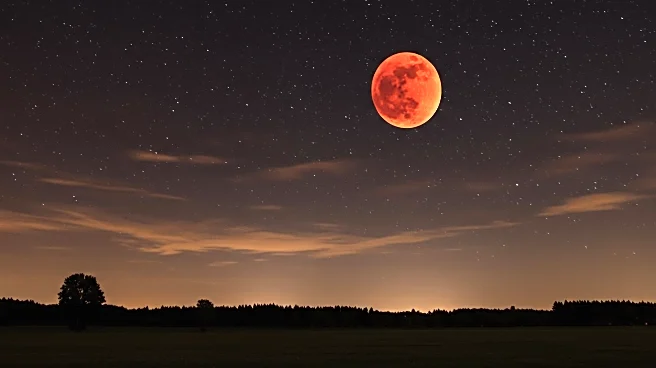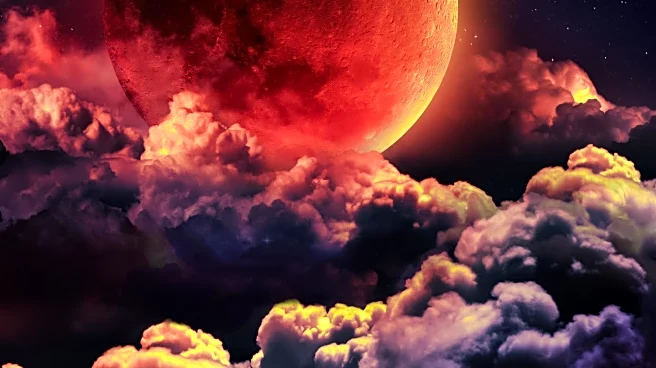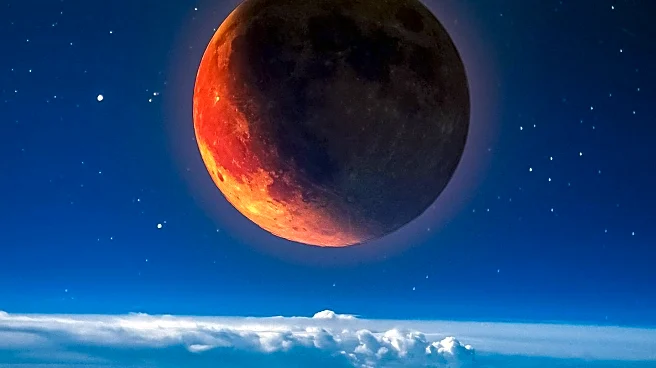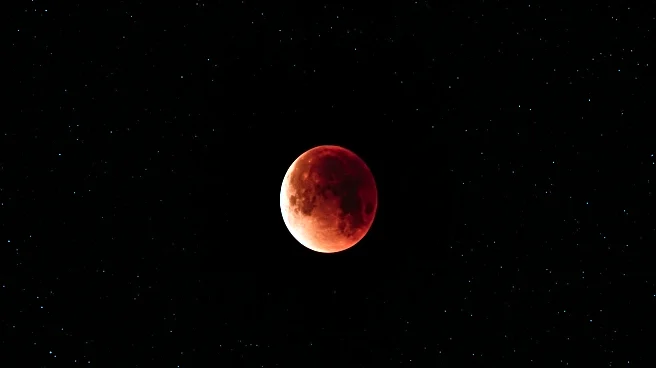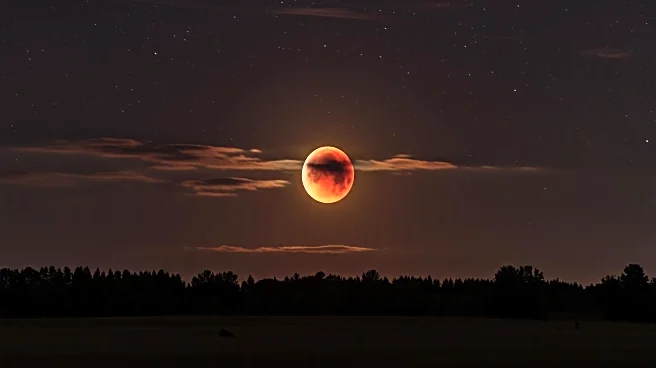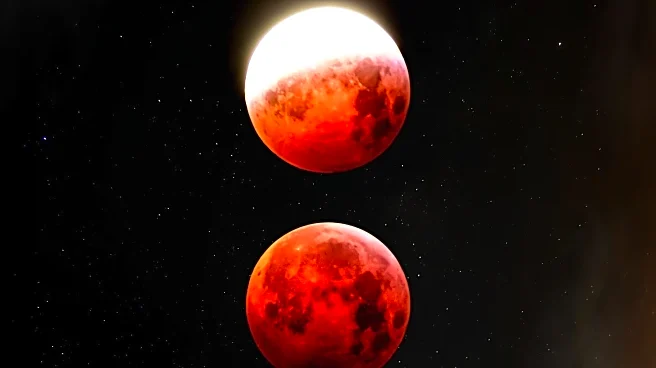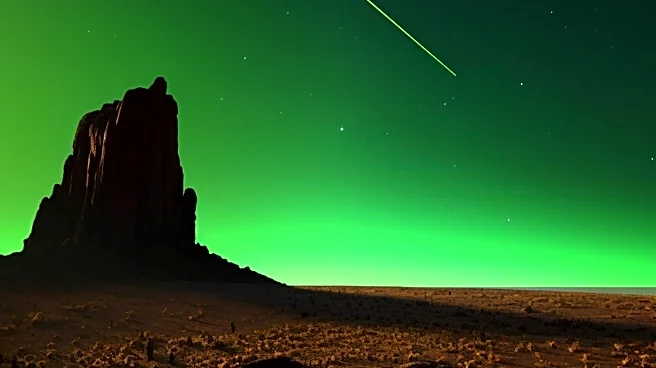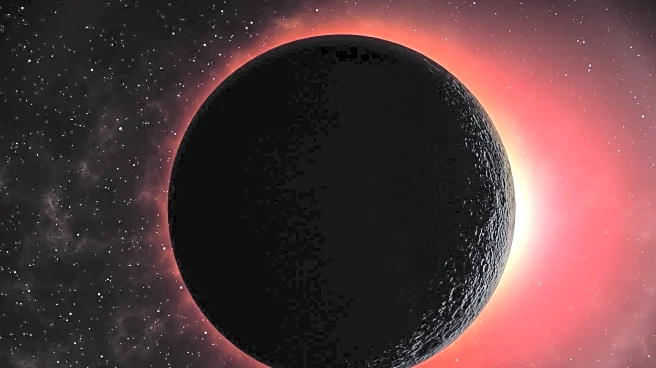What's Happening?
A rare celestial event known as a blood moon is set to occur on September 7, 2025. This phenomenon, which happens during a total lunar eclipse, will cause the moon to appear red due to the Earth's shadow. The event will be visible to approximately 77% of the world's population, with the best views in parts of Asia and Western Australia. However, skywatchers in the U.S. will not be able to see the blood moon. The eclipse will last for 82 minutes, and the moon will appear slightly larger and darker due to its proximity to Earth at perigee. Key cities such as Perth, Mumbai, Cairo, Cape Town, Jakarta, and Denpasar will have specific viewing times for the totality of the eclipse.
Why It's Important?
The blood moon is a significant astronomical event that draws interest from both seasoned astronomers and the general public. It provides an opportunity for educational engagement and public interest in astronomy. The event's visibility across major global regions, excluding the U.S., highlights the geographical limitations of celestial phenomena. This can influence cultural and scientific exchanges, as regions with visibility may host events or discussions around the blood moon. The phenomenon also underscores the importance of understanding Earth's atmospheric conditions, which affect the moon's appearance during the eclipse.
What's Next?
As the blood moon approaches, astronomers and enthusiasts are preparing for the event by organizing viewing parties and educational sessions. In regions where the blood moon will be visible, local observatories and science centers may offer public viewing opportunities. The event may also spark discussions on lunar eclipses and their scientific implications. For those unable to view the blood moon directly, online platforms and media outlets may provide live streams or coverage, allowing a broader audience to experience the event virtually.
Beyond the Headlines
The blood moon's occurrence raises questions about the impact of atmospheric conditions on celestial events. Factors such as pollution and volcanic ash can alter the moon's appearance, providing insights into environmental issues. Additionally, the cultural significance of lunar eclipses varies across regions, with some societies attributing spiritual or mythological meanings to the event. This highlights the intersection of science and culture in understanding natural phenomena.
